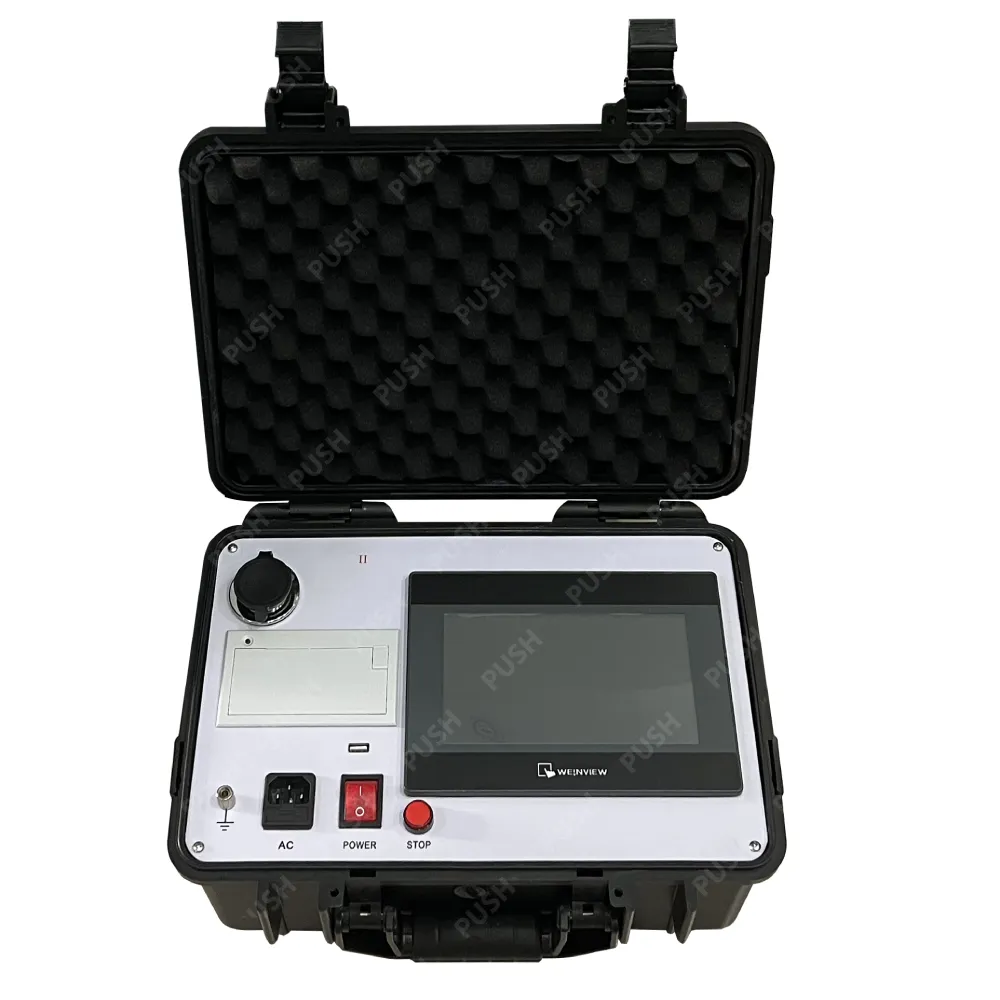 English
English


dc hipot test kit
Understanding DC Hipot Test Kits
In the realm of electrical testing and safety, ensuring the integrity of insulation in electrical devices is paramount. One effective method for assessing insulation strength is through the use of DC Hipot Test Kits. These kits are essential tools in various industries, including manufacturing, power generation, and telecommunications, where electrical safety and performance are critical.
What is a DC Hipot Test?
DC Hipot testing, or DC high potential testing, involves applying a high direct current voltage to an electrical device to evaluate its insulation system. The primary purpose of this test is to identify weaknesses or breakdowns in insulation that could lead to electrical failures or safety hazards during operation. By simulating extreme conditions, technicians can ascertain whether the insulation can withstand operational voltages plus any potential surges.
Components of a DC Hipot Test Kit
A typical DC Hipot Test Kit includes several key components designed to ensure safe and accurate testing
. These generally consist of1. Hipot Tester The core device that generates high voltage. It is crucial to select a tester capable of producing the required voltage levels for the specific application. 2. Test Leads These cables connect the tester to the device being tested and should be rated for the voltage levels in use. 3. Ground Connection Essential for safety, this component helps prevent electrical shock and ensures that any fault currents are grounded correctly. 4. Measuring Instruments Many kits include digital meters or gauges to display leakage current, which is vital for assessing insulation quality.
dc hipot test kit

Steps for Conducting a DC Hipot Test
1. Preparation Before testing, ensure that the device is de-energized and properly isolated from any electrical source. Verify the integrity of the test leads and connections. 2. Setup Connect the Hipot tester to the device's terminals, ensuring a secure and correct connection. Always establish a proper ground. 3. Testing Gradually increase the voltage to the predetermined test level. Monitor the leakage current throughout the test. Most tests will last for a specified duration, typically ranging from 1 to 5 minutes. 4. Evaluation After completing the test, gradually lower the voltage and disconnect the leads. Analyze the leakage current readings—excessive leakage indicates a potential insulation failure.
Importance of DC Hipot Testing
Regular DC Hipot testing is crucial for maintaining safety standards and preventing failures in electrical equipment. By identifying insulation weaknesses, companies can take proactive measures to correct issues, potentially saving significant costs in repairs and preventing equipment downtime. Furthermore, this testing is a vital component of many compliance standards and regulations, assuring that devices meet safety requirements before deployment.
Conclusion
DC Hipot Test Kits play a vital role in the maintenance of electrical safety and performance. Understanding their components, functionality, and the procedure for testing helps professionals ensure the reliability of electrical devices. In an age where electrical safety cannot be compromised, utilizing DC Hipot testing is not just a best practice—it’s essential for ensuring operational safety and compliance within the industry. Whether in manufacturing facilities, power stations, or other electrical environments, investing in quality testing equipment and adhering to proper testing protocols is an investment in safety and reliability.
-
Differences between open cup flash point tester and closed cup flash point testerNewsOct.31,2024
-
The Reliable Load Tap ChangerNewsOct.23,2024
-
The Essential Guide to Hipot TestersNewsOct.23,2024
-
The Digital Insulation TesterNewsOct.23,2024
-
The Best Earth Loop Impedance Tester for SaleNewsOct.23,2024
-
Tan Delta Tester--The Essential Tool for Electrical Insulation TestingNewsOct.23,2024





